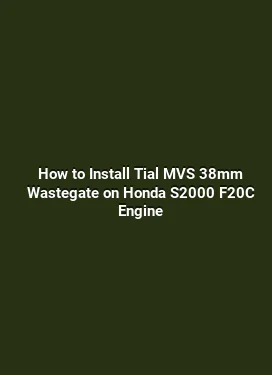Best Twin Turbo Kits for Ford Mustang 5.0 Coyote Engine 2011-2023
The Ford Mustang 5.0 Coyote represents a potent platform for forced induction, delivering thrilling power with a modern, modular design. When pursuing significant horsepower gains, a twin turbo setup is a popular route that can maximize efficiency, throttle response, and mid-range torque. This guide dives into the practical aspects of selecting the right twin turbo kit for the 5.0 Coyote, outlining core components, installation considerations, fuel and cooling strategies, tuning approaches, and real-world expectations. Each section provides actionable details to help enthusiasts weigh options, plan upgrades, and execute a reliable setup suitable for street or track use.
Twin Turbo Kit Overview for the 5.0 Coyote

Choosing a twin turbo system for the Coyote involves balancing compressor size, turbine response, intercooling strategy, and a robust fuel plan. Kits designed for the 5.0 typically include a pair of turbochargers, custom or semi-custom exhaust manifolds, an intercooler or charge air cooler, plumbing, wastegates, blow-off valves, an upgraded fuel system, engine management or ECU calibration references, and mounting hardware. The goal is to deliver consistent power delivery across RPM ranges while maintaining drivability and reliability under hard use.
Historically, twin turbo configurations in the 5.0 community have shown dramatic gains in horsepower with manageable lag and strong low-to-mid torque when paired with precise fueling and cooling. A well-matched kit emphasizes equivalents of boost pressure, pressure ratio, compressor map alignment, and turbo sizing that suits the car’s weight, gearing, and intended use. It is common to see a range of final outputs from around 550–700+ horsepower at the crank with sub-10 psi of boost in street-friendly builds, and substantially more with advanced tuning and high-octane fuel or ethanol blends. The emphasis remains on consistent power delivery rather than peak numbers alone, ensuring the car remains controllable in daily driving conditions and during high-load events.
Key Components and Installation Considerations

Understanding the core parts of a twin turbo kit helps with installation planning and long-term reliability. Each component plays a specific role in delivering efficient airflow, effective cooling, and stable operation under boost. The following subsections break down behavior, benefits, and practical notes that matter during a build.
Twin Turbochargers: The heart of the system, usually a matched pair chosen to fit the engine bay without excessive heat exposure or piping interference. Many kits opt for turbochargers in the range suitable for the 5.0’s displacement and compression ratio, focusing on quick spooling and strong thermal margins. Selecting a pair that aligns with your target boost and drive characteristics is critical. Expect considerations such as turbine housing size, compressor wheel design, and overall efficiency to influence throttle response and peak power.
Manifolds and Headers: Proper exhaust scavenging improves turbo response and reduces backpressure. Cast or fabricated options must accommodate the 5.0’s exhaust layout, ensuring clearance around suspension components and the accessory belt system. A well-designed manifold also minimizes heat transfer to surrounding components, preserving intake charge density and sensor reliability.
Intercooling Solution: Intercoolers or charge air coolers are essential to maintain air density under boost, reducing the risk of detonation. Front-mount intercoolers provide efficient cooling in many builds, though some setups use belly-mounted or end-tank designs to fit specific chassis constraints. Consider core sizing, flow characteristics, and pressure drop when selecting an intercooler to sustain consistent charge temperatures during prolonged pulls or hot-weather racing.
Fuel System Upgrades: A robust fuel supply is non-negotiable with boosted output. This typically includes high-flow injectors, upgraded fuel pumps (often dual-pump or high-capacity in-tank units), and a reliable fuel pressure regulator. Fuel system components must maintain stable pressure under boost, especially during full-throttle bursts or long shifts on the track. Additionally, an ethanol-compatible fuel rail and sensor setup may be appealing for high-boost builds due to the higher octane and cooling properties of ethanol blends.
Engine Management and Tuning: Modern engines rely on precise fuel and ignition control under boost. Kits usually require an ECU or piggyback solution capable of fueling maps, timing adjustments, and boost control strategies. A well-tuned setup considers heat soak, fuel quality, ambient conditions, and vehicle weight. Tuning should be performed on a dyno or through data-rich road sessions to optimize power, reliability, and drivability across temperatures and payloads.
Boost Control and Sensors: Wastegates, blow-off valves, and boost reference lines must be correctly installed to maintain stable boost pressure and prevent compressor surge. Quality sensors for AFR (air-fuel ratio), boost, and exhaust gas temperature help monitor conditions during tuning and daily use, reducing the risk of unintended detonation or lean conditions.
Cooling Upgrades: Boosted engines generate more heat, especially under continuous load. Supplemental cooling, including by-pass thermostats, radiator capacity improvements, and improved oil cooling, can preserve engine longevity. Some builds also consider an external oil cooler arrangement or upgraded coolant routing to manage temperatures during hot laps or long highway cruising.
Performance Expectations and Tuning Strategies
A clear expectation framework helps avoid overpromising and underdelivering outcomes. With a twin turbo system on the 5.0 Coyote, owners commonly pursue a balance between daily drivability and track-ready performance. The overall result depends on the kit’s match to the engine, the drivetrain’s capability, and the quality of tuning and supporting modifications.
In practical terms, a well-matched twin turbo setup can transform a stock Mustang into a high-11-second or mid-10-second quarter-mile car with proper traction management and gearing, depending on the specific components and conditions. On the street, broad torque at low to mid RPMs translates to easier overtakes and confident acceleration, while on the track, precise boost curves and stable intake temperatures enable repeatable lap times. It is important to manage expectations: higher horsepower often requires additional upgrades to the clutch or efficient wheels-and-t tires, as turning boost into forward momentum imposes greater demands on the driveline and chassis.
Boost optimization is a core part of the tuning process. Early tuning calibrations may focus on safe ignition timing and gradual boost ramp to reduce the risk of detonation. As confidence grows, power targets can be adjusted while continuing to monitor AFR, EGT (exhaust gas temperature), and cylinder pressure data. The interplay between boost level, fuel quality, and thermal management determines both peak power and the consistency of power delivery across multiple runs or sessions.
A practical approach to determining the right kit involves evaluating existing modifications, such as intake upgrades, exhaust routing, and drivetrain components. For track-focused builds, aiming for a balanced setup that maintains stable charge temperatures and consistent fuel delivery is often more valuable than chasing the highest possible peak horsepower. For street-oriented builds, reliability and daily drivability take precedence, with emphasis on spool timing and fuel trims that keep the car seamless in everyday use.
Choosing the Right Turbo Size and Supporting Mods
Turbo sizing is influenced by target power, weight, gearing, and intended use. A kit with smaller compressors spools more quickly, delivering strong low-end torque and improved street manners, but may cap peak horsepower. Larger compressors push more air at higher RPMs, increasing potential peak power but risking greater lag and heat load if not matched with cooling and fueling. An ideal plan involves a balanced pairing with the engine’s compression ratio, cam profile, and intake manifold. The supporting mods—fuel system, cooling, and transmission—need to be sized to handle the anticipated boost and torque output. A thorough risk assessment should be part of the planning phase, considering long-term reliability and maintenance, especially for daily-driven cars or vehicles used in competitive environments.
Selecting a kit with a proven track record for the 5.0 platform can help reduce the risk of fitment issues, sensor incompatibilities, or calibration challenges. Reviewing dyno sheets, track results, and user feedback provides real-world context beyond product specifications alone. When possible, engage with a tuner who has hands-on experience with similar configurations to ensure a smoother calibration process and more predictable results under varying weather and fuel conditions.
Drivetrain, Suspension, and Tire Considerations
Power alone does not determine performance. The drivetrain and suspension components must be upgraded to handle higher torque and improved acceleration. A robust clutch or torque-bearing manual transmission, reinforced input shafts, or a strengthened automatic transmission can help manage the additional load. Upgraded axles or differential parts may also be necessary to minimize traction loss and wheel hop, particularly in aggressive launch scenarios. Suspension tuning, including sway bars, springs, and dampers, contributes to improved weight transfer control and cornering stability under boosted conditions. Proper tire selection with adequate grip is critical to translating horsepower into usable speed, especially when launching from a standstill or exiting corners under boost.
Regular maintenance becomes more important with boosted setups. Monitoring for oil leaks, boost leaks, and intercooler integrity helps prevent performance degradation. Routine checks of the fuel system, intercooler piping, and clamps ensure connections remain secure after repeated heat cycles. A well-documented maintenance schedule—covering oil changes, filter replacements, and sensor calibrations—helps sustain driveability and power consistency over time.
Real-World Considerations and Common Pitfalls
When shopping for a twin turbo kit, expect trade-offs between installation complexity, cost, and long-term support. Some kits offer a plug-and-play feel with vendor-backed tunes and installation support, while others require more extensive fabrication and custom calibration work. Factors such as customer support, warranty terms, and the availability of spare parts influence the total ownership experience. Common pitfalls include poor intercooler sizing leading to elevated intake temperatures, underestimating fuel demand which causes lean conditions, and aggressive boost targets without adequate cooling or timing control. A measured, data-informed approach helps mitigate these risks and ensure a smoother upgrade path.
Track-ready builds should incorporate data logging and a plan for cooling management during extended sessions. Street-oriented setups benefit from conservative initial boost settings and a focus on engine safety features, ensuring reliability across daily use and occasional high-performance driving. By aligning the kit choice with the vehicle’s use case, owners can enjoy meaningful power gains while preserving reliability and daily drivability.
Maintenance, Longevity, and Documentation
Boosted engines demand attentive maintenance. Keeping a close eye on oil quality and level, especially with increased engine heat, helps protect critical rotating assemblies. Regular inspection of turbo seals, intercooler outlets, and piping connections reduces the risk of boost leaks and performance degradation. Documenting every modification, calibration change, and maintenance step creates a reliable history that aids future work, such as further tuning or component upgrades. When possible, work with qualified technicians who understand forced-induction setups and the specific demands of the Coyote engine family. A documented maintenance routine translates to longer system life, more consistent performance, and a more confident ownership experience.
In terms of component life, turbochargers generally exhibit longer service when operated within designed boost levels and when heat management is properly addressed. Components like intercoolers, fuel injectors, and pumps benefit from periodic checks and timely replacements if signs of wear or performance degradation appear. Keeping a log of boost pressure, AFR trends, and EGT readings can help spot issues early before they become costly repairs.
Takeaway for Prospective Buyers
For enthusiasts exploring twin turbo options for the 5.0 Coyote, the overarching aim is to combine robust hardware with precise calibration and reliable cooling. A kit that integrates well with supporting upgrades, provides clear documentation, and has a track-record of consistent results offers a more predictable path to the desired power level. While the allure of high horsepower is strong, the prudent route emphasizes drivetrain harmony, thermal management, and a tuned map that preserves daily drivability and long-term reliability. This approach yields a more satisfying ownership experience, a more consistent performance envelope, and a stronger foundation for future upgrades.






